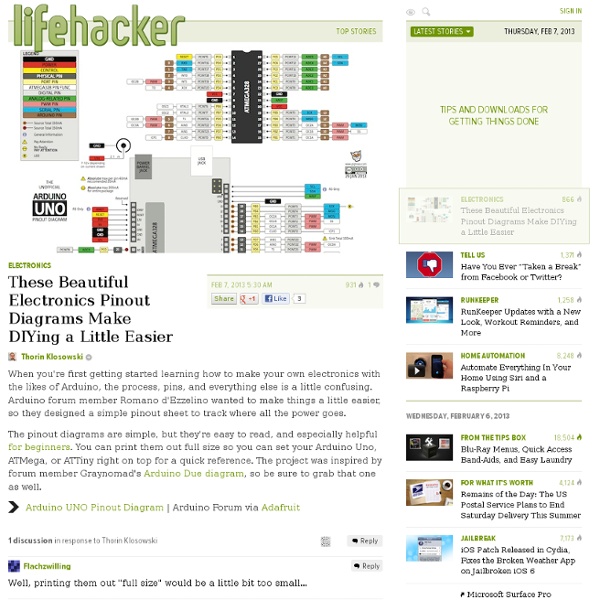



Beginners Guide Beginners Guide to Electronics by Martin T. Pickering Last updated on November 23, 2008 This book gives simplified explanations of how some electronic components work in a circuit. I first became interested in electronics when I was age 10 (as long ago as 1961). ©2008 Martin T. What's the Difference between A.C. and D.C.? How does a Resistor Work? All the colours for 5% tolerance resistors: How do Diodes Work? How do Transistors Work? Abbreviations Although we use the Greek symbol Omega W to represent “Ohms” it is frequently written as “R”. How does a Capacitor Work? What does a capacitor look like? How do Inductors Work? The Relay Bread Board and building a LED Flasher Building the LED Flasher Astable Multivibrator using two transistors
Maker Education Initiative | Every Child a Maker Bubble Machine These are the tools and materials that I used for my bubble machine. Yours will differ greatly depending on what you have available. This is a great project to do with scraps, and odds and ends all hacked together. To make it easier for others to reproduce this, I've done away with my normal format of exactly what to use and instead broken it down into the five main components the machine's made from. Trough: To hold the bubble solution. Bubble Ring: A ring of holes that will spin slowly through the trough picking up the bubble solution. Motion: A slowly moving motor to spin the bubble ring. Blower: Something with a bit of puff. Power: A power source or two for the blower and spinner. You'll also need nuts, bolts, hot glue or superglue to hold everything together. The files I used for laser cutting are included in this step.
(Rethinking) Makerspaces Kids have always made in my library. We encouraged digital and visual and dramatic and rhetorical creativity before, during, and after school. But for a while, I’ve questioned the value of using already heavily used real estate to randomly carve out space for a 3D printer, electronics stations and sewing machines. I had my doubts about the makerspace movement in school libraries. A couple of weeks ago I had the opportunity to chat with Amos Blanton, project manager of the Scratch online community, and a member of the Lifelong Kindergarten Group at MIT Media Lab. Amos makes the case for makerspaces as powerful, authentic, relevant learning experiences, and for when and why library may be the very right space to create a makerspace. Here’s the video of our chat and a few of key points to consider before adopting a maker culture for libraries Amos’ key points: School pressures make it challenging to make space for interest-driven learning.
MaKey MaKey | Buy Direct (Official Site)